Designers in Residence 2016
Q&A with Alix Bizet
Coinciding with International Women's Day, Wednesday 8 March 2017, the Design Museum speaks to the current designer in residence, Alix Bizet about her latest project 'Hair By Hood', her career so far and her design inspirations.
About the resident
How did you first become interested in design?
I was first interested in design whist interning at age 14 in Balmain. One of my tasks was to help classify some of the archives and textiles library. I was fascinated by the clothes and what they conveyed and how much fashion is a strong cultural statement for women in society as well as a laboratory for experimentation and contestation when it comes to image and identity. I was also interested in how design interlocked with our material world and the revolution of manufacturing. Knowing this process is essential in design decisions and brings interesting hijacking and re-appropriation.
How has your design education influenced your career?
My design education at Central Saint Martins, then at the Design Academy Eindhoven helped me gain certain independence in thinking, as both schools aim to push their students to experience their own take on design history and encourage students to experiment but also make accidents. Those accidents were for me a real way to learn by reflecting quickly on how to find quick solutions and thinking outside the box when it came to process. Moreover my education in the Design Academy taught me how essential it is to reflect on the role of the designer in society and what the real need of objects are by investigating outside the design practice bubble through collaboration with other students, designers, craftsmen and the community.
What inspires you the most about design?
The thing that inspires me the most about design, is its power to be a language which touches different aspects of a society and affects its time. It can be physically shared amongst a group of people or a community and can generate from the same object different reactions and different exchanges on its use.
Where do you draw inspiration for your work?
I guess people and human behaviours are one of my inspirations, but also looking at how the body image and culture are challenged daily through individuals by hijacking fashion and norms. I guess London is a daily source of surprise and inspiration for my work
How has your approach to design evolved over the years?
My approach became more personal and based on a mode of investigation. I often realized that the traditional problem solving attitude of the design practice was way too global for me and that I preferred to target certain points where I felt as a designer I could relate to and investigate whether the questions I had could also relate to a group of individuals for whom it was important to highlight or debate with. This allowed me to investigate complex issues such as the tension between body and culture through my current fascination of human hair in relation to my own identity; its meaning for a community from the West Indies for example, and try to extend my research to a city and society. That gave me the opportunity to target the standardization of human hair and how design could find potential scenarios for all the different types of hair and create a collection of garments on this matter, Hair Matter(s).
What’s your biggest achievement to date?
My biggest achievement as a designer is the workshops I held in Northwood School and Harris Academy in Peckham during this residency, and how great it was to collaborate with the students on the hair collection and discover the different angles about hair and identity. Those workshops gave me the opportunity to realize the power of an open process and encouraged me to continue to bring this project into different schools in different cities, and hopefully one day create a giant map of human hair with the different stories and cultures which go beyond it.
What’s your goal as a designer?
My goal as a designer is to create emotional materials or objects that would go beyond the aesthetic or the functional use, but generate stories amongst participants or users. I don’t think that as a designer I can solve a problem, but maybe I can give visibility to an unusual use of material considered as waste and attention to our community. My goal as a designer is to facilitate dialogue by highlighting concerns that could be addressed and push the boundaries and taboos. Finally, through my practice I would hope to gather people together in order to use my project as a platform where exchanging support is the core of the design process.
What makes good design?
I believe good design is a design which raises questions and creates curiosity that goes beyond the surface.
Tell the Design Museum about ‘Hair by Hood’ and the thought process behind your project?
Hair by Hood is the development of an existing project, Hair Matter(s). Exploring anthropological themes collecting hair in different parts of London, I proposed human hair as a viable material and investigated the connotations associated with our hairstyles, questioning cultural perceptions. My ambition is to initiate a discussion through the material I collected. I want to engage diverse groups of people to open a dialogue and create debate around rituals and social customs. This project provokes debate on the use of human hair as a practical material and the ethics of its use. It represents a diverse group of individuals based on participatory method of working. The collaborative approach examines the idea of ownership, reframing my role as a designer. The project was in collaboration with two schools, Northwood School and The Harris Academy in Peckham, where I led workshops with students introducing them to the technique of wet felting for the creation of two hoodies made from hair collected at local hairdressers with distinct labels mentioning the exact origin of the hair collected.
Do you think your project will help people embrace their cultural and ethnic differences?
I think this project is there to bring visibility to a problem where individuals are facing pressure to fit a model, which is often deformed and overrated in comparison with a population that is becoming more and more mixed, diverse and ageing. This “dominant model” or “perfection” creates frustration for numerous individuals that feel they have failed to fit in. So, beyond the cultural and ethnic difference, this project addresses the need to talk about diversity of individuals of all origins, shapes and haircuts as an advantage and to promote the “vivre ensemble” (living together) where re-appropriation of an identity is allowed.
What do you think of the natural hair movement?
I believe that natural, dyed, shaved, tamed or fake, all hair and haircuts are a statement in favour of diversity and against standardization. But I also believe that in some cases the natural hair movement is still for some communities a necessary statement for its visibility and proves that if people still do not feel entitled to have their own hair there is still discrimination, and this generates existing tension between bodies and culture versus bodies and nature, and the real need and the right of having the choice to be.
Do you think there has been a shift in beauty trends in the last decade?
I think there has been a shift in beauty since our society today is more culturally mixed. The cosmetic industries and the politics involved, acknowledges that the dominant model is yet obsolete. Beside that we also saw the rise of social media, Youtube channels and other online platforms of communications which introduced an independent way of seeing beauty through different angles and encouraged a niche market for individuals that felt excluded from normative beauty. Saying that I also believe there is still a dominant model which reflects a society with inequalities. So the notion of bad or good hair is still a reality which needs to be challenged through controversy.
Why is hair such a controversial topic to discuss, politically and socially?
Hair is still a controversial topic, as it continues to shape our body towards norms, trends and culture. Therefore, by shaping hair differently or besides the norm, hair is so easily associated with being controversial as it is a visible radical break with the acceptable hairstyle. The artist Kader Attia often stressed this great tension of a political, social and cultural concern around the body and how it influences the relationships between individuals. Hair has also been associated over history with small groups of individuals, opposed to the mainstream opinion such as punks, skinheads and civil rights activists.
It’s International Women’s Day (8 March); do you have a message for young women considering a career in design?
My message is to pursue what fascinates you despite the challenges you encounter.
Do you think there are enough women in design? What should be done to encourage more women to get into the profession?
I think there are more women getting into design nowadays, which is a sign the practice is also changing from its industrial/engineering aspect often associated with the male gender, to a much more local and man-made scale, which perhaps encourages women to get involved in this practice. I still think a lot of girls doubt their place in this field due to its male history and sometimes its corporate association. Therefore, I think successful female designers should get more involved with the educational point of view of design, and should be better visible across its history. It’s important that women in design share their challenges but also their successes as a message of hope for the younger generation of women and men. I also believe there should be total equality of gender as some fields in design are female dominated and many young men within those fields are afraid to be discriminated by other males, for example if they decide to pursue a career in knitwear.
Finally, it’s International Day of Happiness this month, which design makes you happy?
A design that makes me happy, is a design that gives food for my thoughts beside its functionality.
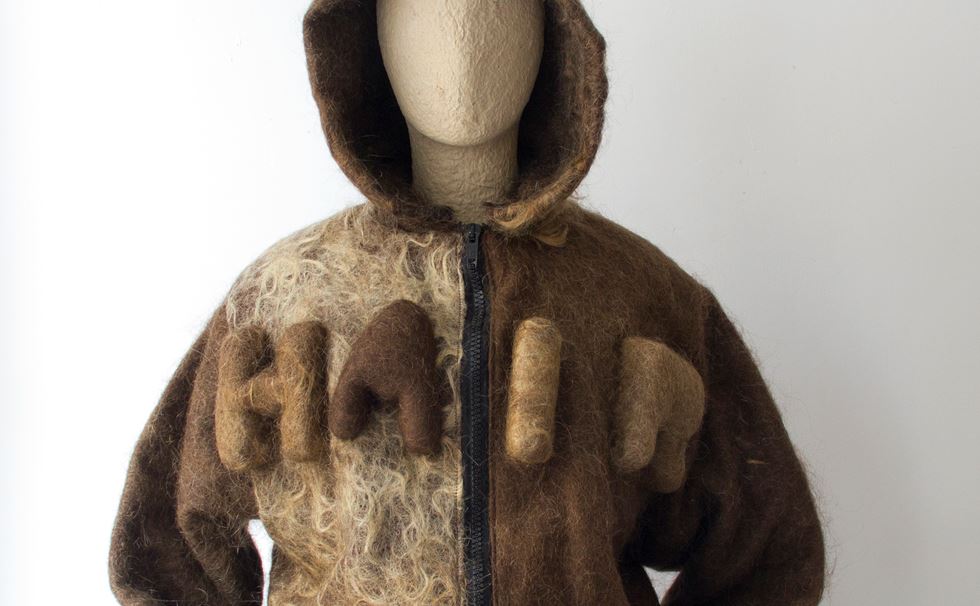
Hair by Hood, Alix Bizet | Photography by Juliette Delforge

Hair by Hood, Alix Bizet | Photography by Juliette Delforge

Hair by Hood, Alix Bizet | Photography by Juliette Delforge

Hair by Hood workshops, Alix Bizet | Photography by Juliette Delforge
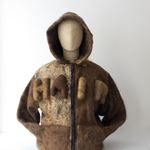
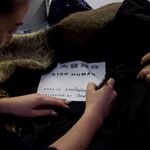
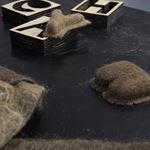
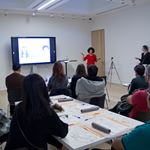
Designers in Residence Programme
The Designers in Residence programme is a core part of the museum's activity, and exists to provide emerging designers, across any discipline, with time and space away from their regular environment to reflect, research and consider new ways of developing their practice.